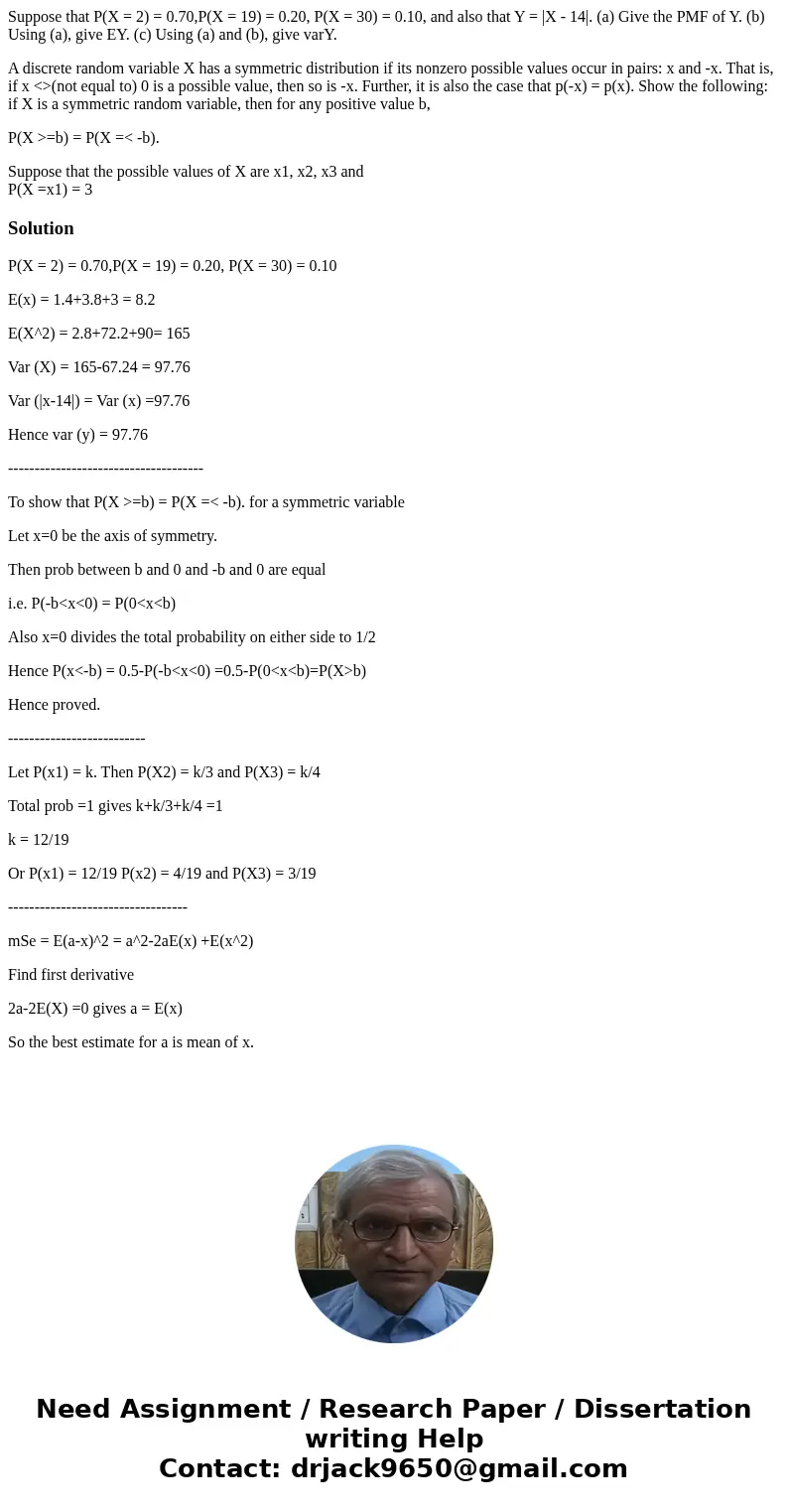Suppose that PX 2 070PX 19 020 PX 30 010 and also that
Suppose that P(X = 2) = 0.70,P(X = 19) = 0.20, P(X = 30) = 0.10, and also that Y = |X - 14|. (a) Give the PMF of Y. (b) Using (a), give EY. (c) Using (a) and (b), give varY.
A discrete random variable X has a symmetric distribution if its nonzero possible values occur in pairs: x and -x. That is, if x <>(not equal to) 0 is a possible value, then so is -x. Further, it is also the case that p(-x) = p(x). Show the following: if X is a symmetric random variable, then for any positive value b,
P(X >=b) = P(X =< -b).
Suppose that the possible values of X are x1, x2, x3 and
P(X =x1) = 3
Solution
P(X = 2) = 0.70,P(X = 19) = 0.20, P(X = 30) = 0.10
E(x) = 1.4+3.8+3 = 8.2
E(X^2) = 2.8+72.2+90= 165
Var (X) = 165-67.24 = 97.76
Var (|x-14|) = Var (x) =97.76
Hence var (y) = 97.76
-------------------------------------
To show that P(X >=b) = P(X =< -b). for a symmetric variable
Let x=0 be the axis of symmetry.
Then prob between b and 0 and -b and 0 are equal
i.e. P(-b<x<0) = P(0<x<b)
Also x=0 divides the total probability on either side to 1/2
Hence P(x<-b) = 0.5-P(-b<x<0) =0.5-P(0<x<b)=P(X>b)
Hence proved.
--------------------------
Let P(x1) = k. Then P(X2) = k/3 and P(X3) = k/4
Total prob =1 gives k+k/3+k/4 =1
k = 12/19
Or P(x1) = 12/19 P(x2) = 4/19 and P(X3) = 3/19
----------------------------------
mSe = E(a-x)^2 = a^2-2aE(x) +E(x^2)
Find first derivative
2a-2E(X) =0 gives a = E(x)
So the best estimate for a is mean of x.

 Homework Sourse
Homework Sourse